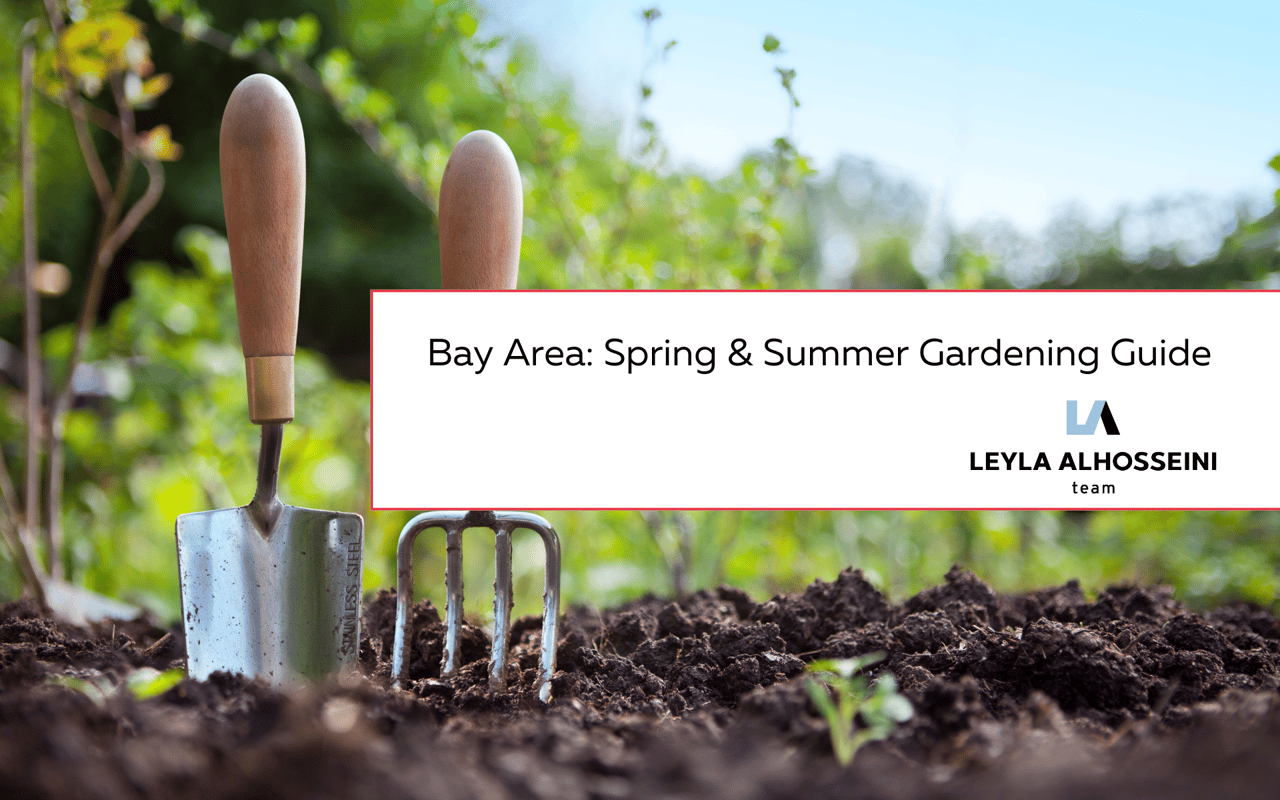Bay Area: Spring and Summer Gardening Guide
Newsletter

Newsletter

● Watch for aphid, white fly, thrip, and scale infestations. Ant trails leading to and away from plants are a typical sign that an insect pest is feeding on plant juices. Visit: www.sfwater.org/CleanBay for the Pest Control Tips booklet.
● Watch for signs of pest or disease damage on fruit trees. Ensure young fruit trees are getting adequate water.
● Adjust sprinkler systems for warmer and drier weather. Avoid excess runoff onto paved surfaces.
● Mulch heavily to retain soil moisture.
● Time to deadhead! Remove spent flowers from flowering shrubs (especially rhododendrons), and annuals to encourage more flower production.
● If pests are a problem in your garden, consider planting plants which will attract beneficial insects. Visit: www.sfwater.org/CleanBay for the Pest Control Tips booklet.
● Fertilize perennial flowering shrubs like rhododendrons, azaleas and camellias when they finish blooming with a slow-release organic fertilizer.
● Fruit Tree Tip: For a harvest of larger apples, ‘thin’ developing apples to one apple per cluster.
● Inspect woody perennials for signs of powdery mildew or other fungal diseases.
● Remove stray, crossing, diseased or damaged branches, pruning badly infected portions. Leaves that touch or branches that cross encourage fungal diseases and insect
infestation. Prune plants open for good air circulation and clean up leaf litter around plants.
● Be sure to keep orchard floor clean. Pick up leaf litter and fallen fruit to avoid spread of disease.
● Water trees and lawns deeply, but less frequently to encourage deeper roots.
● Stake tomatoes and flowers before they fall over.
● Watch for aphids, earwigs, snails, slugs, and white flies. Inspect the underside of cole (cabbage family) crops, leafy vegetables, and older leaves on flowers for small, round, yellow caterpillar eggs.
● IPM Tip: If caterpillar damage is spotted, first handpick the caterpillars. If the damage is especially bad, consider spraying the organic pesticide bacilli’s thuringiensis (Bt). Use
with caution, however, as Bt will also kill the beneficial insects in your garden.
● Eliminate sources of standing water throughout the yard to reduce mosquito populations.
JULY
GARDENING TASKS
● Plant autumn-blooming versions of bulbs such as spider lily, colchicum, ivy-leaved cyclamen, and allium.
● Plant flowering vines such as clematis, bougainvillea, passion vine, and trumpet vine when temperatures are mild.
● Water potted plants, vegetables and lawns adequately and early in the day. Two lighter waterings in close succession are preferable to a single heavier watering. Water will penetrate deeper and reduce runoff.
● As cooler and foggier days arrive, try reducing irrigation frequencies on ornamentals until warm fall weather.
● Watch for pests and diseases. Prune dead parts of plants. Visit: www.sfwater.org/ CleanBay for the Pest Control Tips booklet.
● Begin summer pruning for pome and stone fruits to encourage ripening and to promote strong branch growth next year.
● If you are in a foggy area of the City, you are most likely experiencing mold and fungus problems. Prune badly infected plant parts to increase air circulation.
● For powdery mildew, a common fungal disease, prune older, more diseased leaves and compost in a hot compost pile or place in green compost cart. If necessary, remove entire plant.
● Feed vegetables, flowers, and citrus plants with a slow-release organic fertilizer.
● Clean up dead and diseased leaves dropped from plants.
Stay up to date on the latest real estate trends.

Newsletter

Newsletter

Marin

Alameda County

Silicon Valley

San Francisco

Newsletter

Newsletter

Newsletter
You’ve got questions and we can’t wait to answer them.